After Canggu, we were still wanted more time in Bali, but for visa reasons we had to exit Indonesia before coming back. We chose Kuala Lumpur, Malaysia for a 1-week getaway, which was the cheapest place to fly from Denpasar. (Also, after leaving Indonesia in October, we spent another week in Kuala Lumpur before going north to Penang).

Kuala Lumpur (or just “KL”) really felt like the hub of lower Southeast Asia. More developed and greater infrastructure than I imagine in Jakarta, but also with a very vibrant and visible mix of cultures. The city, like Malaysia as a whole, has a long history of migration (pre-colonial, colonial and modern) from throughout Asia: South Asian, East Asian, Minangkabau (West Sumatra), Borneo and many other places as well as “indigenous” groups. Religious sites and practices are on full display, from Buddhist and Hindu temples to the calls-to-prayer from mosques. Due to its wealth and infrastructure, Kuala Lumpur continues to attract people for study or work.
We attended a dance exhibition for tourists (at the Malaysia Tourism Centre) featuring dances from the different cultures of Malaysia… Indian, Chinese, Borneo, Sarawak, Portuguese, etc. The finale ended with a song/dance with lyrics “Malaysia… the essence of Asia, the true Asia—“. The finale dance itself was a fusion of different modern and traditional influences.
The refrain, despite being a ridiculous statement, nevertheless struck me as somewhat true. Indonesia, like Malaysia, is an aggregation of many regional cultures. Malaysia, and especially KL at the heart, is the more compact form. I wonder how will this compare to other places we will see?
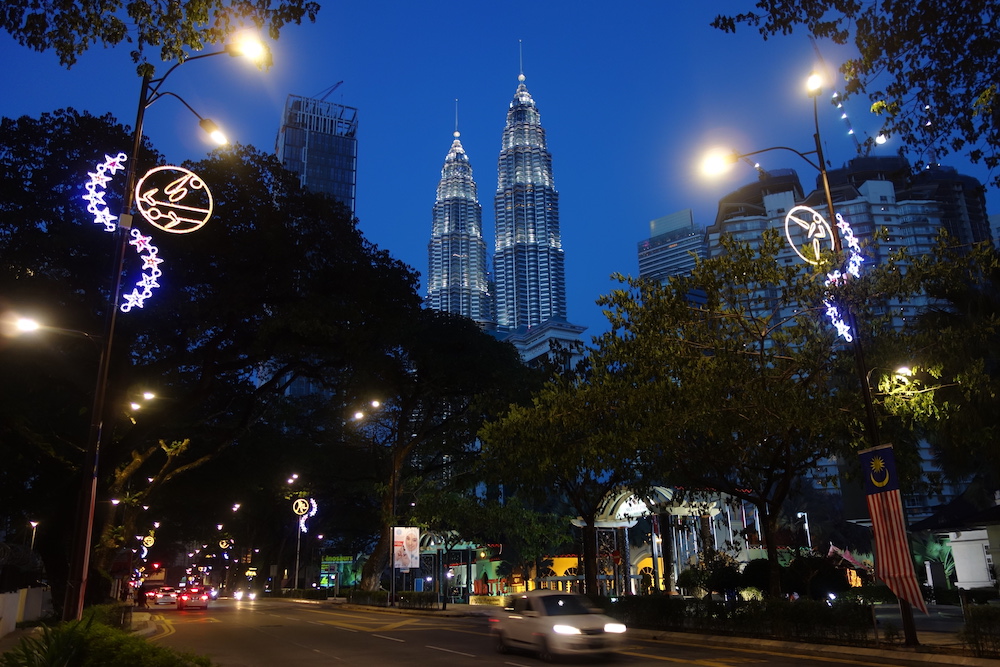 Petronas Towers (ie. KL Twin Towers)
Petronas Towers (ie. KL Twin Towers)
We stayed in a large high rise (reasonable Airbnb) a few blocks from the famous buildings: KL Tower (looks like Seattle space needle or Tokyo’s Sky Tree); and KL twin towers, the tallest building in the world once upon a time. High rises were everywhere, but there are still pockets of neighborhoods with small houses that have so far survived the development.
We used Uber a lot in KL, as do many locals. There seemed to be a hundred or so Uber drivers idling outside the airport waiting for their phones to chime. In the city center, we made good used of the free hop-on/hop-off buses (though the bus service map was a confusing failure in design). KL, despite being a large developed metropolis, is still part of Southeast Asia, so it’s really not pedestrian-friendly, and sometimes you feel like you need to hail an Uber just to cross a busy street with no pedestrian crossing.
Compared to Indonesia, prices are little higher in Malaysia. But the Malaysian Ringgit (RM), is more manageable than the Indonesia Rupee (IDR). $1 = 4 RM, $1 = 13,000 IDR. We roamed around some big markets and streets, the highlight was Kampung Baru. Also people-watching in the Chinatown, Little India, Little Pakistan areas. Food was overflowing with flavor, and mostly good — the unremarkable ones were a result of poor choice of restaurants.
 A market street in Chinatown
A market street in Chinatown
But to save money we took advantage of our full kitchen to cook a lot. Buying groceries was a challenge without a car, and more challenging on my wallet than expected. Malls were everywhere, everywhere, everywhere. The most common reason for tourism is shopping. So if that is your thing, then you can fly across the world to shop at Gucci, or H&M, or Polo, etc.
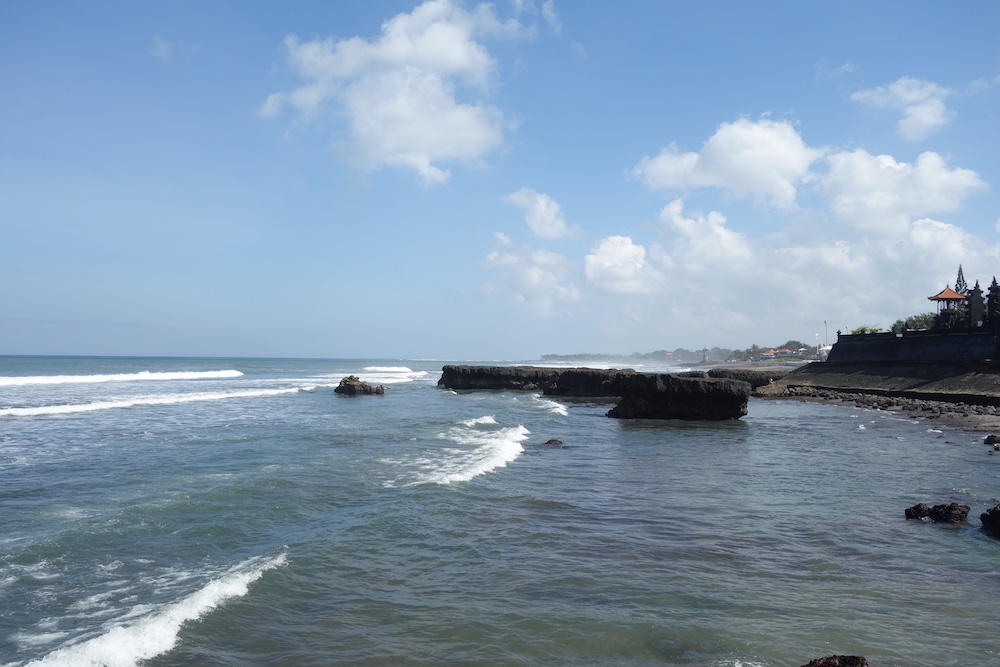 Echo Beach at Canggu
Echo Beach at Canggu
After 3 months in Japan from mid-Spring to mid-Summer, we took off for our real adventure. Our first stop: Bali, Indonesia.
Immediately out of the airport and taxi negotiated we blazed through roads streaming with cars, small trucks and mostly lots of mopeds. It was dizzying. Locals drive fast whenever they can, and many tourists try to keep up.
After navigating ever narrower roads occasionally passing small rice fields we arrived at our villa in Canggu (pronounced “chang-gu”). Canggu is on the southeast coast of Bali, where we spent all of July. Kanako attended a yoga teacher training 6-days a week, while Asa and I explored the area. A couple days a week, Asa attended a small informal school tailored to international kids.
We mostly explored on foot — no longer a common form of transportation for locals (see this). So the narrow roads and speedy drivers are not so accommodating to pedestrians, sidewalks were rare. We trudged on, slowly.
Rice fields and resorts. Clearly a growing imbalance of agriculture and tourism. There were pockets of construction everywhere in Canggu, from a mega-resort due to finish in a couple years to small shops, and growing villas. It’s a sign of immense change to the area due to regular tourism from everywhere, but mainly Australia and Europe. While we are perpetually tourists on this trip, most of the tourists in Canggu we saw roam around like they own the place, and I got pretty tired of them.
In the skies we could see kites everywhere. Some were ghostly kites made of garbage bags and bamboo, other kites much fancier in animal shapes, birds, dragons, butterflies, small to quite large; usually very very high in the sky, rain or sun, day and night. Weather was a little hot and humid but not unpleasant. Unfortunately the Canggu beach was not good for swimming, only for surfers.
 Old Man Beach at Canggu
Old Man Beach at Canggu
Throughout first week we were regularly reminded of the foreignness of Bali. We found a small scorpion in our room, menacing snakes on the road, centipedes. Asa was most concerned about the dogs, who held territories in packs along the roads. In our villa compound there were three dogs (Cookie, Caramel, and Cookies & Cream — we made up some names) that truly frightened Asa at the start. After a couple weeks he became friendly with them, though still wary.
Life in Bali
Balinese are a lovely and friendly people, with welcome smiles and eager to converse in whatever English they know, which can be a little or a lot. They are also very affectionate with children, sometimes it can feel a little creepy… Asa being smothered with hugs and kisses by our young male waiter during dinner. Later we learned that children are considered to be sacred, perhaps in a way closer to the gods.
Definitely I expect there are a lot similarities to India, since Bali is very Hindu religiously / culturally. After killing the scorpion in our room I felt I might have offended the staff when I told them. There are many temples and small shrine around that we’re interested in exploring but the locals don’t seem so welcoming for these places.
There is evidence everywhere of the emphasis on crafts and decorations. Shops selling furniture, statues giant and tiny, shrines and a variety of building materials. Materials must be pretty cheap.
Outside of Canggu
One Sunday we took a taxi to Seminyak, a neighboring beach town, but much bigger than Canggu. Overridden with fancy shops, and overly congested with traffic. But I guess it was worth walking around and exploring. As a pedestrian, how do you cross streets that have no traffic signals or street signs, racing mopeds on the sidewalks, cars and trucks speeding along? Patiently and carefully, especially with a 3-year old.
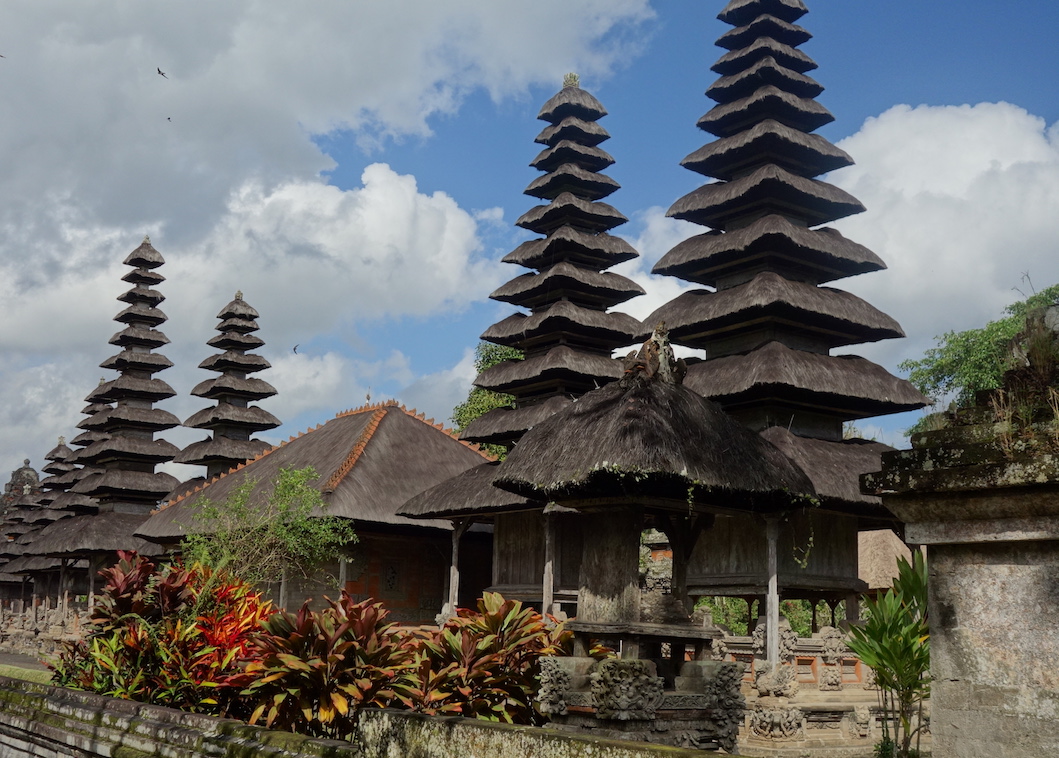 Taman Ayun temple
Taman Ayun temple
We also spent a half-day exploring the large Taman Ayun temple, located in what feels like the middle of the island, far from the beach but not quite in the mountain highlands. It was once an important water temple providing purifying water to farmers and for other important rituals. It was an interesting site, but like most Balinese temples, the inner complex is walled off to outsiders. So you are limited to observe over the wall to see the temple structures and imagine what it must have been like to use the space a couple hundred years ago.
Next we explored Alas Kedaton, a smaller temple complex in a forest of tall straight trunked trees well-populated by macaques. The monkeys are the main highlight for visitors. Temple guides approach visitors and with bananas or nuts encourage the monkeys to climb on top of you for a quick picture.
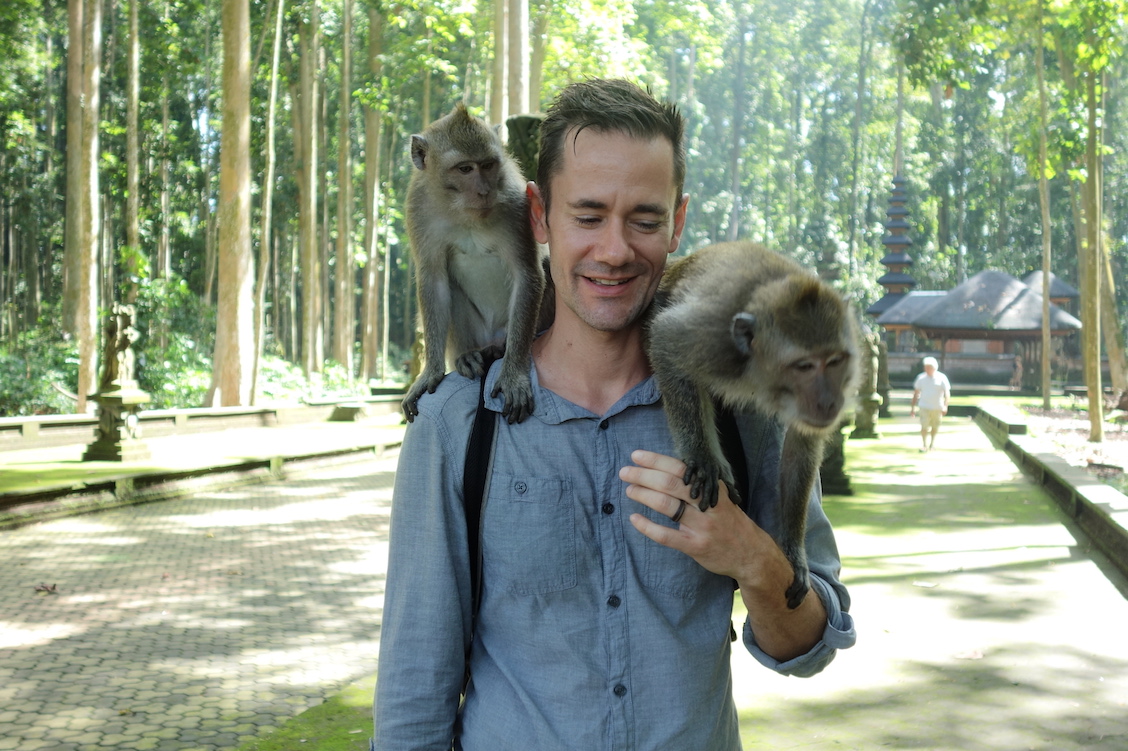
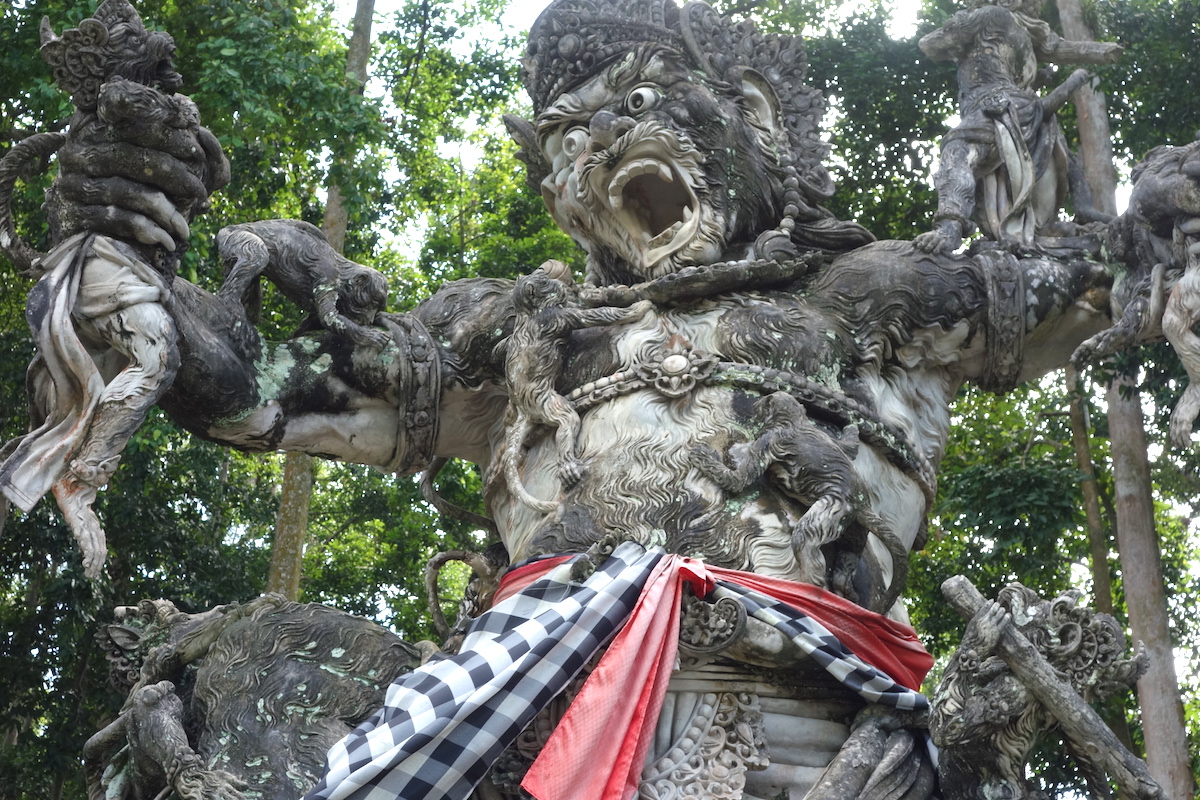
After 8 amazing years, we said one last “aloha” to friends and our home in Honolulu, packed almost all our stuff up and shipped it to the west coast. Then the three of us – Kanako, my wife, Asa, our 3yr old son, and I – packed our remaining things and headed the other direction. It took months of thought, planning and convincing (ourselves and each other) just to be ready to get on the plane.
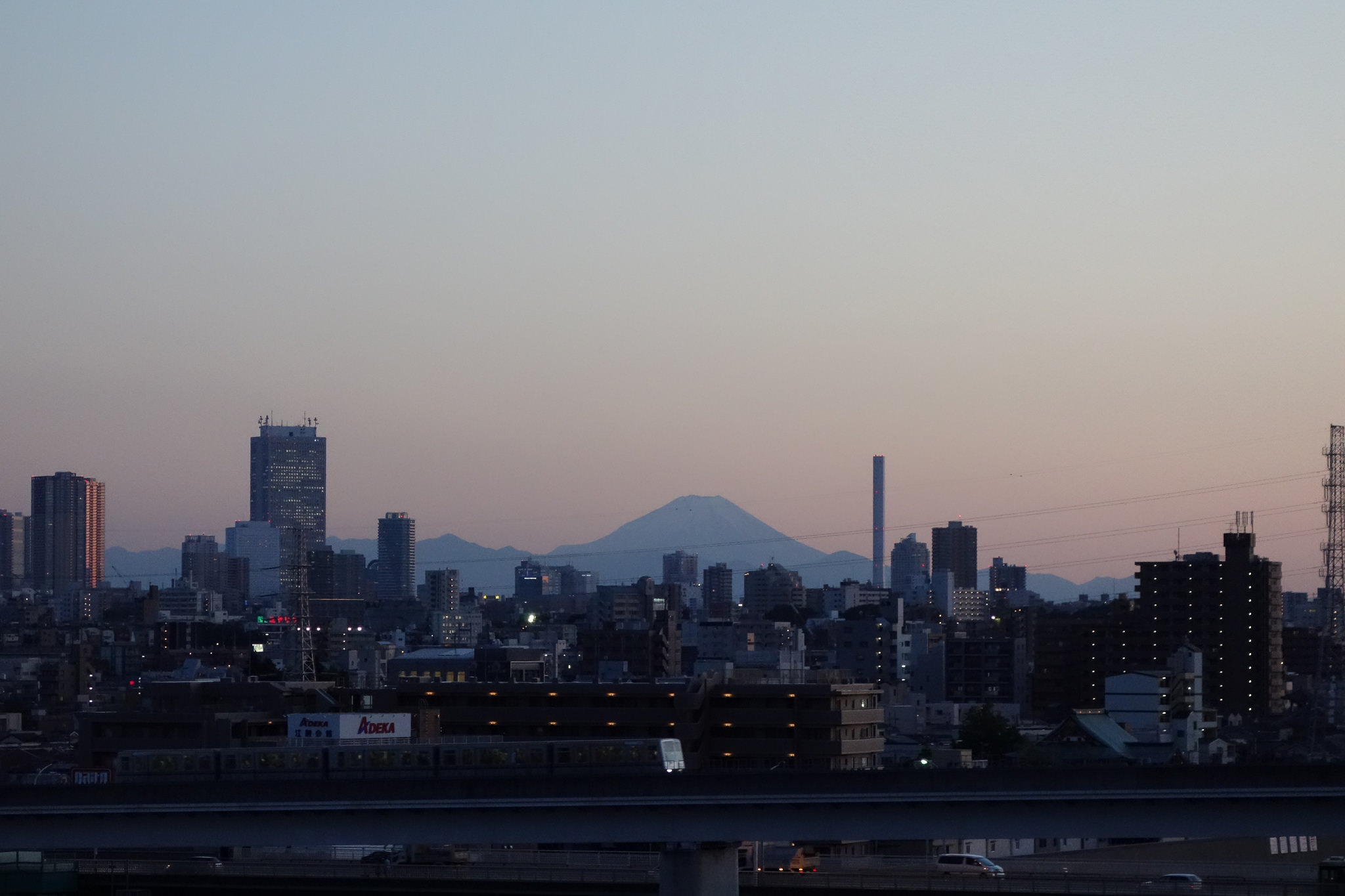 Fujisan from Adachi
Fujisan from Adachi
Konnichiwa
But actually the first part of the adventure was to spend a few months in Japan to spend some time with family and in-laws. Before settling in Tokyo we spent a couple weeks doing tour through Kyoto, Kanazawa, a short stay at a ryokan in Noto, and an old style house in Gokayama. Kanako and I also spent a few days down in Fukuoka meeting friends and getting a taste of a more relaxed life compared to the rush of Tokyo.
But our 2.5 months in Tokyo was special for all of us. We stayed in Adachi district, outside the craziness of central Tokyo, but an easy subway ride to wherever we needed to go. Asa went to a nearby preschool, and enjoyed time with grandparents, especially Kanako’s father’s cooking. Kanako prepared for her yoga teacher training in Bali. I did my freelance work, practiced my Japanese, and experienced life as a temporary ex-pat (i.e. migrant). It was a useful transition time for us to get ready for the challenges of being without a real home of our own for the next several months.
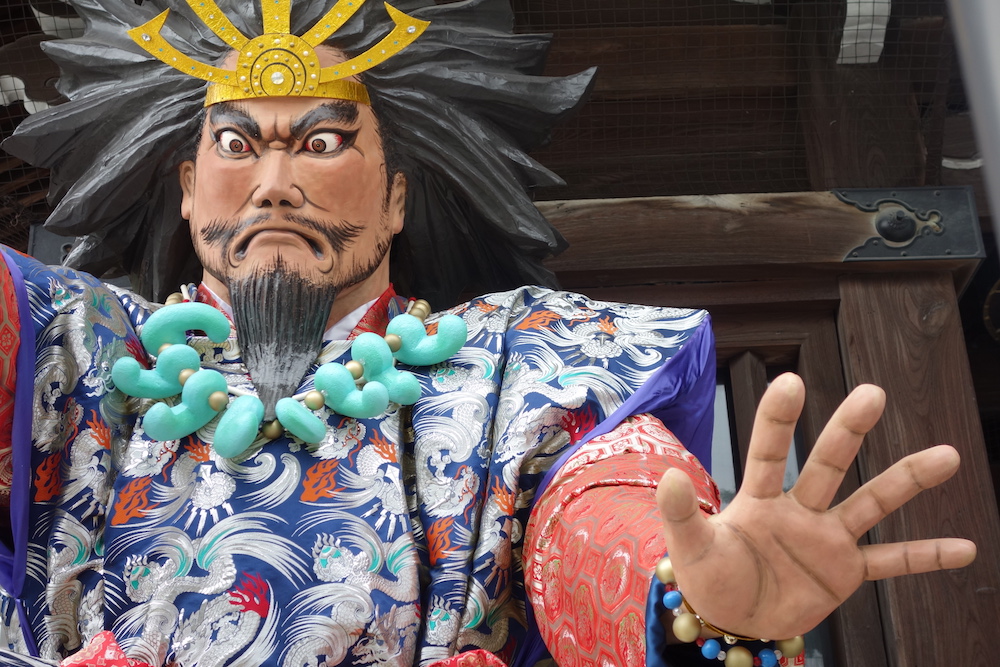
In early July, we said, Sayounara and boarded a plane for Denpasar, Bali. Our plan, only roughly sketched out at the time, was a several month journey through Southeast Asia. Where would we go? How long would the trip take? What would happen when we finished? This collection of dispatches captures some of the experiences we had along the way.